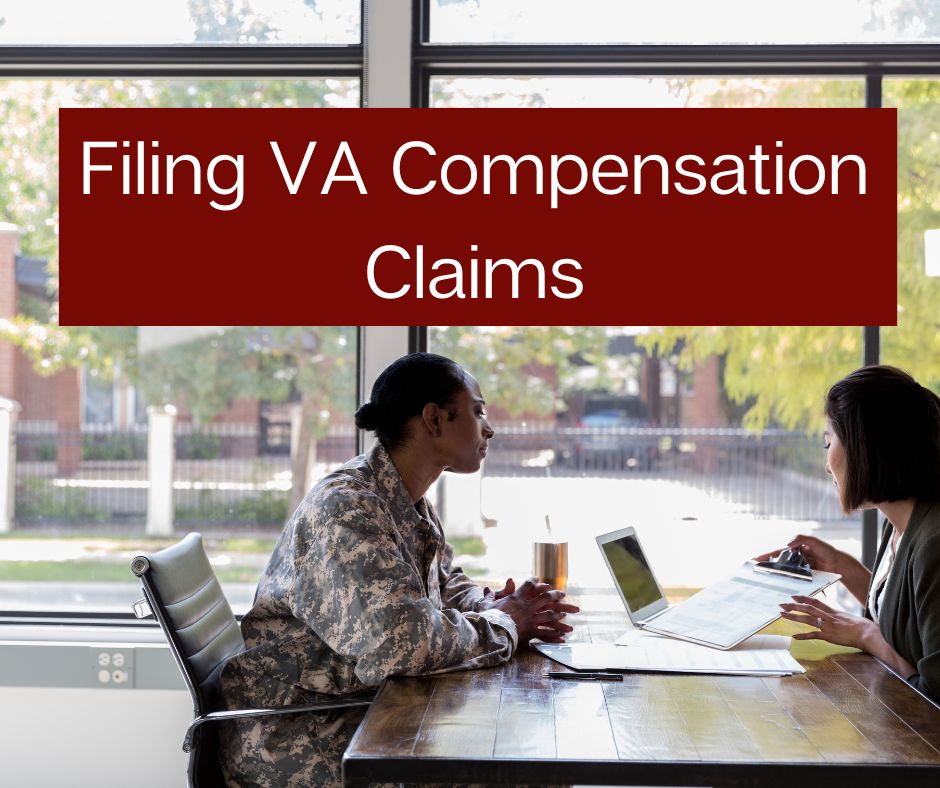How to File VA Compensation Claims
Part 1 – Initial Claims
The VA Compensation Claims process is rather complicated. However, it is possible to understand. Over the next four weeks we are going to look at the claim and appeal process with the VA. Veterans and their survivors can file one of four different types of claims which are covered under two claim styles. If a claim is denied, there are three recourses for the claimant. These are to file a Supplemental Claim, a Higher-Level Review, or to appeal to the Board of Veterans Appeals.
The four different types of claims are:
- Initial Claims
- Increase to rating
- Clear and Unmistakable Error
- Supplemental Claim
Below we will examine each of these in more detail.
One Year for Compensation Claims
It is very important to know the date that the VA receives a claim. With the use of supplemental claims (which we will address next week), the Veteran can preserve the initial date of a claim as long as they continuously pursue the claim, filing supplemental claims within a year of the previous denial. Under this rule, the Veteran can pursue a claim for decades. They may still be eligible to receive back-pay to their original filing date. Many Veterans allow the year deadline to go by because they don’t make note of when they filed. It is essential to remember when you file, and mark that date so you do not lose that possibility of back-pay.
Am I Eligible to File a Claim
That’s a good question. There are certain eligibility requirements for all VA Benefits. The following short video explains the requirements for filing a claim and many other benefits that Veterans have from the VA.
Three “Initial” Claims
There are three Initial claims with the VA. These claims include:
- Initial Claim. An initial claim is a claim for an injury or illness which the Veteran has never claimed with the VA in the past. It is the first time that they have claimed service connection for the condition. In the case of Survivors benefits it could be the first claim for service-connected death compensation (DIC). These are examples. we will look at some other claims which also count as initial claims below.
- A claim for an increase to a disability rating. This is a type of initial claim even though it is on a disability you already have a rating for.
- CUE. This is a request for revision of a previous decision denying benefits on the grounds that the decision contains Clear and Unmistakable Error.
Initial Claim
First Time Filing
This initial claim is what most people would consider as an initial claim. The claim is simply a claim to the VA for benefits which have never been requested in a claim before. The advantage to initial claims is that the VA cannot put any weight into previously denied claims for the Veteran for other disabilities. The rater must examine the claim under its own merits.
An important consideration is that each different disability or disease is a separate ‘initial’ claim. This means that, even though you submit PTSD, asthma, and prostate cancer on the same form, the VA will treat each as a separate claim. Veterans will often receive a letter stating they have been approved for one of several disabilities they have applied for. They ask why the VA defers the other claims. This is simply because the VA views each as its own claim. The VA may have enough information to decide the PTSD, yet still be developing the evidence for the asthma and prostate cancer. The VA will not hold up the payment for an approved claim while the rater continues the process for the other claims.
Increase a Rating
This type of claim is actually the most common ‘initial’ claim that is filed with the VA. When a rating has been assigned for a disability and it has been over a year since that decision, then it is considered a final decision. While that rating cannot be appealed to raise it higher since it has been over a year, a ‘new’ claim can be filed to increase the rating.
It doesn’t matter if a Veteran has been denied a rating increase in the past. The rater must treat each request for an increase as a new claim. Even though a claim for an increase was denied in the past, the Veterans disability may have gotten worse. The VA recognizes this. They will treat every increase request as though this was the first time the Veteran was requesting their disability rating be increased with all of the development and duty to assist that this entails.
Other claims, such as claims for special monthly compensation and claims for TDIU, are also request for increased ratings.
Non-Service Connected Pension
Each time a Veteran applies for non-service connected pension it is a new claim. This is because a VA Pension is a needs based program, based on the Veteran’s income and net worth. This is much like the request for and increase in ratings. A Veterans economic standing will change over time. Therefore, a rater will treat each pension claim as the first time the Veteran has filed for a pension. The Veteran must provide evidence of income as well as un-reimbursed medical expenses of everyone in the house. The VA assumes that Spouses and dependent children will contribute to the income of the family. Therefore, they must report their income also.
These claims are the most common that are filed as initial claims. There are some others that would require treatment as initial, but they are rare and will generally be of sufficient complexity that the Veteran will already be working with a VSO or other representative.
As always, if you have any questions or comments please let me know. You can contact me at info@nwavet.org.
God Bless
from NWAVet








Hi there! Would you mind if I share your blog with my facebook group? There’s a lot of people that I think would really enjoy your content. Please let me know. Thanks
Go right ahead. I hope it helps some of them!